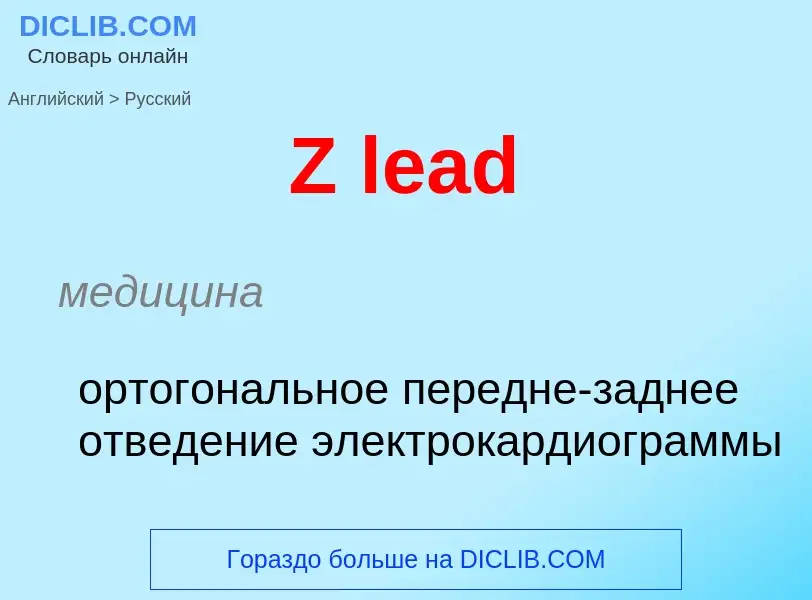Μετάφραση και ανάλυση λέξεων από την τεχνητή νοημοσύνη ChatGPT
Σε αυτήν τη σελίδα μπορείτε να λάβετε μια λεπτομερή ανάλυση μιας λέξης ή μιας φράσης, η οποία δημιουργήθηκε χρησιμοποιώντας το ChatGPT, την καλύτερη τεχνολογία τεχνητής νοημοσύνης μέχρι σήμερα:
- πώς χρησιμοποιείται η λέξη
- συχνότητα χρήσης
- χρησιμοποιείται πιο συχνά στον προφορικό ή γραπτό λόγο
- επιλογές μετάφρασης λέξεων
- παραδείγματα χρήσης (πολλές φράσεις με μετάφραση)
- ετυμολογία
Z lead - translation to ρωσικά
медицина
ортогональное передне-заднее отведение электрокардиограммы
строительное дело
металлический профиль Z-образного сечения
Ορισμός
Βικιπαίδεια
Lead (82Pb) has four stable isotopes: 204Pb, 206Pb, 207Pb, 208Pb. Lead-204 is entirely a primordial nuclide and is not a radiogenic nuclide. The three isotopes lead-206, lead-207, and lead-208 represent the ends of three decay chains: the uranium series (or radium series), the actinium series, and the thorium series, respectively; a fourth decay chain, the neptunium series, terminates with the thallium isotope 205Tl. The three series terminating in lead represent the decay chain products of long-lived primordial 238U, 235U, and 232Th, respectively. However, each of them also occurs, to some extent, as primordial isotopes that were made in supernovae, rather than radiogenically as daughter products. The fixed ratio of lead-204 to the primordial amounts of the other lead isotopes may be used as the baseline to estimate the extra amounts of radiogenic lead present in rocks as a result of decay from uranium and thorium. (See lead–lead dating and uranium–lead dating).
The longest-lived radioisotopes are 205Pb with a half-life of 17.3 million years and 202Pb with a half-life of 52,500 years. A shorter-lived naturally occurring radioisotope, 210Pb with a half-life of 22.2 years, is useful for studying the sedimentation chronology of environmental samples on time scales shorter than 100 years.
The relative abundances of the four stable isotopes are approximately 1.5%, 24%, 22%, and 52.5%, combining to give a standard atomic weight (abundance-weighted average of the stable isotopes) of 207.2(1). Lead is the element with the heaviest stable isotope, 208Pb. (The more massive 209Bi, long considered to be stable, actually has a half-life of 2.01×1019 years.) 208Pb is also a doubly magic isotope, as it has 82 protons and 126 neutrons. It is the heaviest doubly magic nuclide known. A total of 43 lead isotopes are now known, including very unstable synthetic species.
The four primordial isotopes of lead are all observationally stable, meaning that they are predicted to undergo radioactive decay but no decay has been observed yet. These four isotopes are predicted to undergo alpha decay and become isotopes of mercury which are themselves radioactive or observationally stable.
In its fully ionized state, the beta decay of isotope 210Pb does not release a free electron; the generated electron is instead captured by the atom's empty orbitals.

